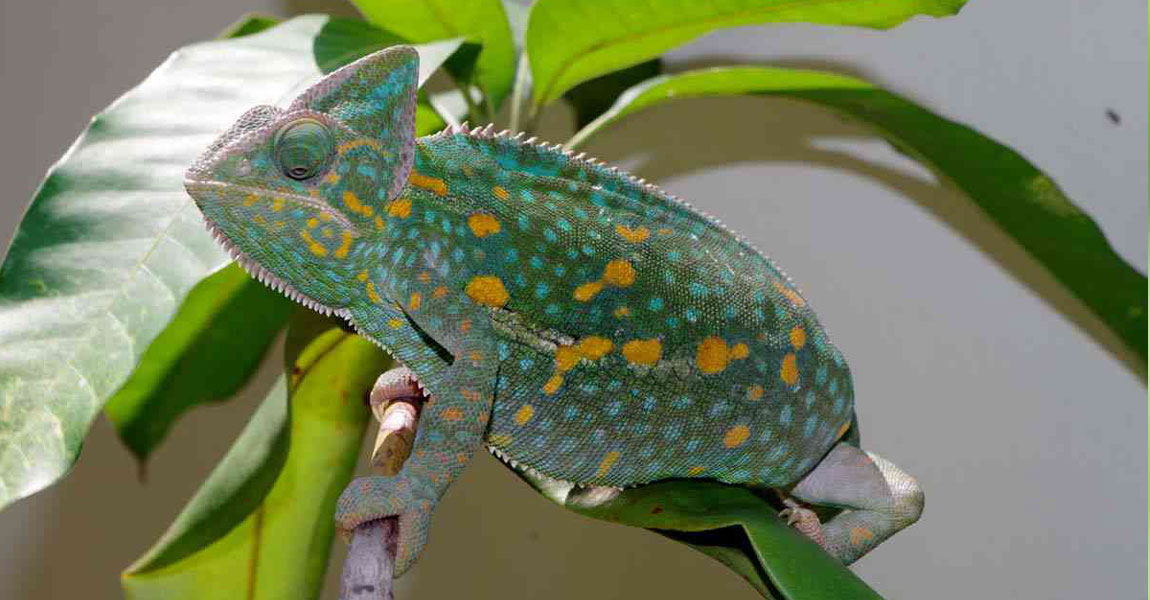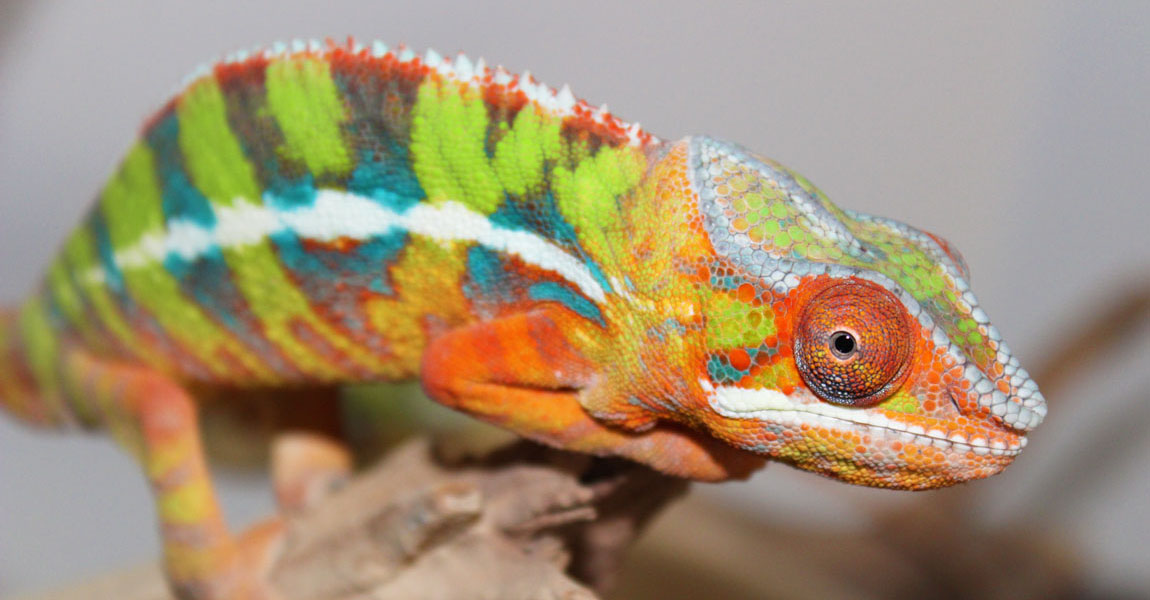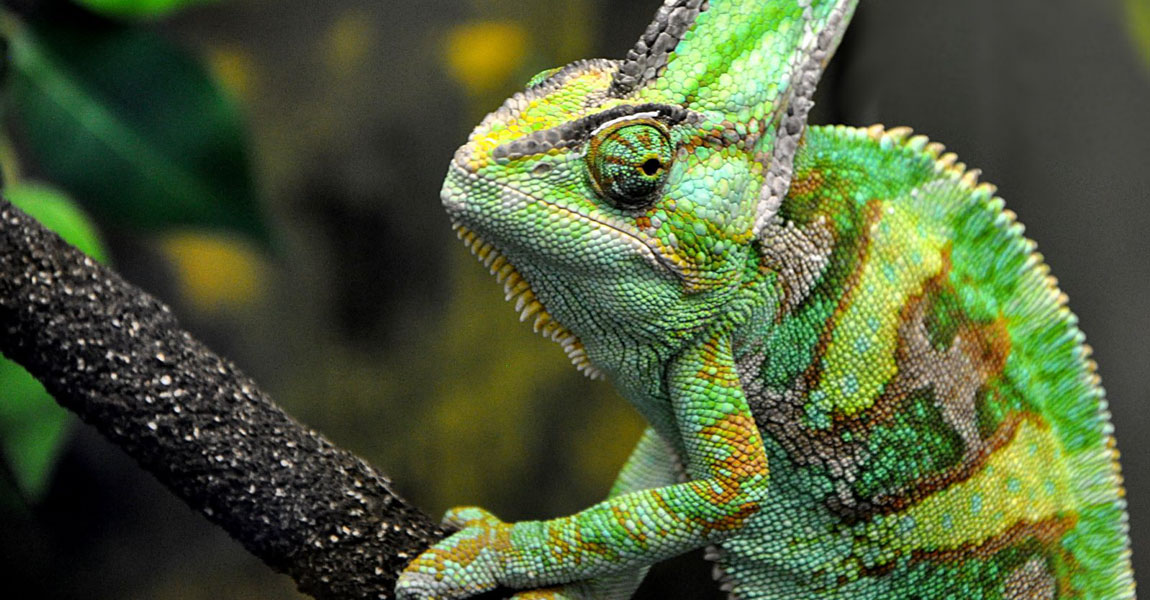There are various types of enclosures on the market that can be used to house chameleons. But here’s an idea that’s a little different and works very well for some chameleon owners: Keeping a large chameleon in a room of its own. If you have a room in your house that meets the requirements described here, this can be fun for you and pleasant for the chameleon. This arrangement provides the chameleon with a level of mental stimulation and exercise that is hard to match in a typical cage. The owner is also able to interact more positively with the chameleon and often observe more natural and interesting behaviors than would be seen in a cage. A setup like this is a good housing option for most of the big chameleons.
Check the particular needs of the species you intend to keep for any special requirements. You might be tempted to think that because they would have the run of an entire room, you could keep two or more chameleons together. Be aware that most chameleons are so territorial and aggressive that, even in a large room, there would probably be conflict and stress.
The Room
The room should have a large window; several windows or a bank of windows would be even better. An east-facing window would be ideal, because it would allow the chameleon to enjoy the warmth of the morning sun. Next best would be a west-facing window, which would get afternoon sun. Afternoon sun can be hotter, so more care is needed to provide a cool, sheltered retreat for the chameleon. Northern exposures are not recommended because direct sunlight does not usually enter through a north-facing window. Southern exposures, on the other hand, are nice and sunny, but can create a very hot room. If you are careful to keep the room cool and have a planted area where the chameleon can retreat from the sun, a southern-exposed room can still be used, however.The chosen room should be used for a purpose that is compatible with the presence of a free-roaming chameleon. Avoid using rooms that are high-traffic, high usage areas, or that contain appliances or machinery that could prove dangerous to a chameleon. Rooms that usually won’t work include kitchens, bathrooms, utility rooms, garages, living rooms, family bedrooms and recreation rooms. Appropriate rooms include home offices, rarely used guest bedrooms, sunrooms, enclosed porches and extra rooms currently used for storage that can be cleaned out and put to better use.
Remove, isolate or enclose any machinery, equipment or other fixtures that might pose a hazard to the chameleon. Certain fixtures may be potentially hazardous only when in use. Check carefully for the whereabouts of the chameleon before using such items. These include things like office equipment with moving parts, exercise equipment, reclining chairs, etc.
Although chameleon waste is not usually a problem, all surfaces are of materials that are easily cleaned. Clothes drawers are plastic. Tabletops are Formica or smooth, hard bamboo. Metal blinds are used instead of curtains. The carpet is an attractive but tough, commercial grade berber. The sofa is upholstered in a stain-resistant fabric, and the pillow covers can be removed for washing.
Plants
I included numerous plants for the chameleon to use, and they help create a fresh, tropical atmosphere. The chameleon sunbathes on the weeping fig (Ficus benjamina) on the sofa table in front of the window. The fig is pruned and trained for this purpose and for a sculptural effect. The bamboo palms (Chamaedorea elegans) flanking the sofa are used as additional perches and as avenues to other parts of the room. The heartleaf philodendrons (Philodendron scandens) provide an elevated pathway and acrobatic opportunities for the chameleon, as well as create an appealing frame for the window.An umbrella tree (Schefflera pueckleri) is where the chameleon usually sleeps and hides when it does not want to be seen or disturbed. A peace lily (Spathiphyllum) and pothos (Epipremnum) provide “stopover sanctuaries” along the wall between the window area and umbrella tree, so the chameleon is not stressed by a long trek through open space from one point to the other. Additional plants include bromeliads (Vriesea, Guzmania and Neoregelia) and a moth orchid (Phalaenopsis).
Lighting
Some people worry that standard glass windows do not transmit enough ultraviolet light for basking lizards such as chameleons. However, I have used ultraviolet detectors, which indicate that quite a bit of ultraviolet light does actually come through. Just to be on the safe side, however, the owner takes the chameleon to an outside wire cage a couple of times a week on nice days to get extra, unfiltered sunlight.
Shower
There are products on the market specifically for chameleons that provide a constant source of dripping water for drinking. These are not used in the room described here, however. Next to this room is a bathroom, in which another small weeping fig is kept. Every two days, the chameleon is placed on the weeping fig and both tree and lizard are placed in the shower. A gentle, tepid “rain” is then showered upon the tree and chameleon for 30 to 45 minutes. During the shower, the chameleon drinks and, almost always, defecates (making waste management very easy).





